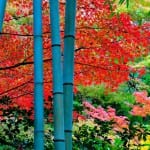 Finally things are beginning to cool down as we move through nature’s most endearing season. Along with the rapidly turning leaves, cooler breezes, and better food, autumn is the traditional time when sake brewed the previous season goes on sale. Two types of sake you may come across in your autumnal perusing are aki-agari and hiya-oroshi.
Finally things are beginning to cool down as we move through nature’s most endearing season. Along with the rapidly turning leaves, cooler breezes, and better food, autumn is the traditional time when sake brewed the previous season goes on sale. Two types of sake you may come across in your autumnal perusing are aki-agari and hiya-oroshi.
Although sake is not usually aged for long, it is in general a bit too young to drink when the brewing season wraps up in the spring. Both the flavors and the fragrances are brash and sharp-edged, and a bit of time sitting quietly helps round out and deepen the sake.
Traditionally this was just about six months, and so the fall became the time when properly aged sake was released. Naturally, brewers often had to release some sake earlier to satisfy demand. But the connoisseurs knew that properly matured sake was well worth the wait. Sake released in the fall after the maturing over the summer came to be known as aki-agari.
The only problem is that the term does not apply too well to modern times.
Fall still remains the traditional time for releasing sake, and this is the season with industry tastings galore. But in actuality maturation periods are far from uniform. Along with the advent of refrigeration came massive flexibility in terms of maturing sake.
These days, some brewers still only mature their sake six months or so, but others do so for a year or longer, and many at very low  temperatures, to get precisely the profile they are looking for. Temperature affects the speed of changes during maturation, as does the choice of aging vessel (bottles or tanks). This allows brewers to tweak their flavor profiles, and maintain consistency throughout the year. But everyone does it a bit differently, and it makes the term aki-agari a tad less universally applicable.
temperatures, to get precisely the profile they are looking for. Temperature affects the speed of changes during maturation, as does the choice of aging vessel (bottles or tanks). This allows brewers to tweak their flavor profiles, and maintain consistency throughout the year. But everyone does it a bit differently, and it makes the term aki-agari a tad less universally applicable.
Today, aki-agari refers in a broad sense to sake from the most recent brewing season that is released in the fall. You may see it at sake shops and department stores all across Japan.
Then, there is hiya-oroshi. The word hiya-oroshi has its origins back in the Edo period. Back then, finished sake was stored in the large sugi (cryptomeria wood) tanks used for brewing. Normally, this sake had been pasteurized once (by heating it for a short time) before being put in these tanks for maturation. If they needed to ship some out, they would have to pasteurize the sake a second time before putting it into small cedar casks – called taru – for delivery.
This is because the outdoor temperature was still high in the summer, which would allow the sake to become warm enough where dormant enzymes could become activated, potentially sending the sake awry. A second pasteurization permanently deactivates these enzymes, removing that fear, but taking a bit of the zing of the sake along with it.
However, once it became cool enough in autumn, brewers could fill their taru from the storage tank without pasteurizing the sake, and ship it with no fear of it going bad. The lower temperatures of autumn ensured enzymes would not be activated. Such sake – sold in the fall without pasteurizing a second time before shipping – came to be known as hiya-oroshi.
Hiya-oroshi often has a bit more of a fresh, lively taste to it than other sake. While not as brash as freshly pressed sake, there can be a slightly youthful edge to it. Naturally, this varies greatly from sake to sake, and from kura to kura.
And, interestingly, some prefectures in Japan, most notably Nagano and Saga (although there are others) have set an official day for  releasing hiya-oroshi, September 9. Naturally, this is not law, but just something the brewers have mutually agreed upon to add a bit of specialness to the event and the sake that it highlights.
releasing hiya-oroshi, September 9. Naturally, this is not law, but just something the brewers have mutually agreed upon to add a bit of specialness to the event and the sake that it highlights.
Note that hiya-oroshi is technically the same thing as nama-tzume, i.e. the second of normally-two pasteurizations is foregone. But nama-tzume is a purely technical term whereas hiya-oroshi has a seasonal implication, i.e. it is only released in the fall.
The problem is, though, that the term hiya-oroshi is not a legal definition and is therefore open to variation from brewer to brewer. In other words, it’s the usual fun-and-games of the sake world: a term on a label means a particular thing – unless it doesn’t.
And, also typical of the sake world, the industry maintains the spirit of it all. What is important is respected and adhered to, even if the details vary a bit. So almost always, hiya-oroshi will be slightly young and vibrant. That much is consistent from brewer to brewer.
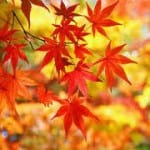 And to make things interesting, some brewers consider hiya-oroshi as just one kind of aki-agari. In truth, that is actually valid thanks to the vagueness of the definition of aki-agari, even if it is a tad confusing. So have fun with that.
And to make things interesting, some brewers consider hiya-oroshi as just one kind of aki-agari. In truth, that is actually valid thanks to the vagueness of the definition of aki-agari, even if it is a tad confusing. So have fun with that.
What all this means is that now – right now – is the best time to try hiya-oroshi, and notes its slightly youthful touch, and the attendant appeal. While mostly a local, fresh product that is widely available in Japan for a short period of time, some of it does get out to other places in the world as well. Look for it at a reputable sake shop near you.





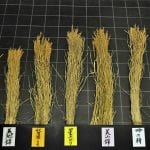 Way back in April of this year I was in London as a judge for the International Wine Challenge’s Sake Competition. On the morning of the third straight day of tasting sake, it was down to a few sake and a few judges. We were assessing whether or not the sake that had made the cut thus far were worthy of a gold, silver or bronze medal, or whether they were to be relegated back to the quagmire of mediocrity.
Way back in April of this year I was in London as a judge for the International Wine Challenge’s Sake Competition. On the morning of the third straight day of tasting sake, it was down to a few sake and a few judges. We were assessing whether or not the sake that had made the cut thus far were worthy of a gold, silver or bronze medal, or whether they were to be relegated back to the quagmire of mediocrity.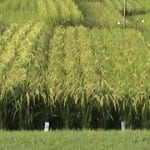 harvest rice, not a late-harvest rice, we should not expect much more out of it. This is about as rich or deep a profile as we can expect, and because it was a deliberate choice on the part of the brewer, we should acknowledge that and give it a medal.”
harvest rice, not a late-harvest rice, we should not expect much more out of it. This is about as rich or deep a profile as we can expect, and because it was a deliberate choice on the part of the brewer, we should acknowledge that and give it a medal.”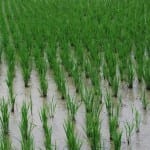 Most, but not all, sake rice tends to be okute; this includes Yamada Nishiki, Omachi and a few more well-known types. Gohyakumangoku is a typical example of a sake rice that is wase. And there are of course many rice varieties that are neither early nor late harvest, but rather somewhere in the middle.
Most, but not all, sake rice tends to be okute; this includes Yamada Nishiki, Omachi and a few more well-known types. Gohyakumangoku is a typical example of a sake rice that is wase. And there are of course many rice varieties that are neither early nor late harvest, but rather somewhere in the middle.